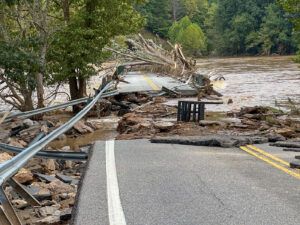Utilities and local governments are responsible for the mounting task of managing and maintaining their physical infrastructure. Increasingly, they are turning to innovative technologies to assist in progressing their programs and collecting important data on their assets. One of the foremost issues is finding ways of collecting condition information on all assets, particularly linear, underground water systems. Without accurate condition information it is difficult to monitor and accurately plan for maintenance and replacement, often leading to breaks, leaks and service disruptions that could have been avoided with accurate asset data.
PSD Citywide sat down with Chad Atcheson, Product Manager for Suez and Doug Hatler, Chief Revenue Officer for Fracta, who have partnered to intersect the use of artificial intelligence (AI) and machine learning to asset management programs specifically within the water distribution
market.
Hatler and Atcheson provided an overview of Fracta and Suez and their work in the area of AI in asset management.
Hatler:
Fracta is a technology company, originally out of the robotics industry in Japan, however, the robotics approach we were looking at wasn’t conducive to what was being seen in the water distribution market in the United States (US). Fracta switched focus, to an artificial intelligence, machine learning technology company. Our focus in the area of asset management is on linear assets, specifically buried water distribution mains, the small to medium diameter pipe that is after transmission and before the service lines.
We focus on using AI and machine learning to predict the likelihood of failure, we look at the infrastructure and assets in the service area and determine criticality on a consequence of failure and financial basis. From there, we calculate a weighted business risk exposure score, multiplying the percentage of likelihood of failure times the consequence of failure dollar amount to come up with a risk dollar figure that can be used to prioritize the underground pipe assets for further condition assessments. This can help determine, where to do leak detection, where to adjust operating conditions, and ultimately where to prioritize your rehabilitation based on accurate and reliable dollar amounts.
We are part of the end-to-end asset management process specifically for water distribution mains, assisting engineers and planners to better decide where to spend their capital and operating budgets.
Atcheson:
Suez is well known for our tanks. Because of this work, we have several municipalities reaching out to us with issues surrounding their pipelines, specifically their water mains. We looked at the issue on a broader scale and then scaling it back down, noticed that there are an estimated one million miles of pipes in North America in critical condition. This leads to water quality issues, water main breaks and so forth, combine this with regulatory pressure (i.e. some Northeastern States are pushing for a 150-year cycle for rehabilitation for pipelines), we saw a problem and sought to use asset management as a solution.
Essentially the asset management program consists of three components: a risk-based analysis, condition assessments and the rehabilitation and replacement. The first component is where Fracta really comes into play for us, assisting in identifying gaps and running the risk-based analysis to identify the likelihood of failure for the assets we are assisting with replacing.
Hatler explained how AI in asset management is being used and the benefits of the technology.
The approach we are taking, we describe as fast, accurate and affordable. Typically, pipe asset management, with the use of condition and risk assessment, has been a consulting and engineering exercise, normally engaging the utilities when they are undergoing the master planning stage. Generally, only a limited amount of data is available about the asset. Using age, pipe details, breaks, and some physical condition to assess condition and identify asset risk, we are learning that there are hundreds if not thousands of variables that impact the condition and risk of a buried pipe.
This is where machine learning is a key factor. We now have the computing power, the sophistication of data science and data from the utilities to look at not only five, ten, or fifteen, but we could look at as many as 1,300 different variables that could impact a pipe. This includes geographic, environmental, and land use data. In a lot of cases, this data aren’t readily available, therefore, we create proprietary national databases of all this information and overlay and geocode it on the water utility service area. We obtain the pipe asset information from the utility (generally, length, diameter, material of construction, install date etc.) and at least five years of break history for each pipe segment.
With that information, we can use a machine learning algorithm to train it on the data set and once it is validated and verified using the training data set, we can run the machine learning model on the entire set of data. This allows for an objective unbiased look at lots of data, processing it and looking for correlations between the data variables and break events. Based on the correlations to the break events, Fracta will calculate a statistical probability of whether that pipe will break in the next 1 year, 3 years, 5 years, etc.
When we are done processing the data, there are usually between 30-60 variables that have the strongest correlation for break events, however, it can be different for each pipe segment and it can be different across distribution systems. It usually takes between 4-8 weeks from when we get the data from the utility and when we can complete the analysis. We look at something called balanced accuracy, which is how well we predict true positives and how well we predict true negatives. This tells us how well we are predicting pipes that will break as well as pipes that won’t, because it is just as important to predict one as the other.
In addition, we compare the results to a model that looks solely at age, solely at breaks or any other multi-variable models, and we have been seeing the machine learning algorithm finds between 20 to 30 percent more breaks and bad pipes in a much smaller number of miles, which means it is finding the worst pipes better than these other models. Hatler gave detail on how utilities are currently using the data from the machine learning algorithms.
There are several use cases where our data is presently being used. The first is in prioritizing rehabilitation and replacement initiatives. We have done some comparisons with several larger utilities and we have found that our model finds more bad pipes in a smaller number of miles than those using age or break history models. The utilities are in essence starting to recalibrate how they are selecting what pipe to rehabilitate or replace and starting to make decisions using the enhanced data. They may look at the data on a GIS system, which is colour coded depending on a high or low likelihood of failure, and if there previously had been a plan of what to replace, they will then go to our map and look at the data provided on the pipes to update the plan.
The second case is leak targeting. You have a large number of miles of pipe and you don’t have a budget to do leak detection, to find non-revenue loss water leaks across the whole network, so where do I decide to do my leak detection? You can look at the data and where you are seeing the most vulnerable or most at-risk pipes and you can go out and pick and choose to do leak detection in those areas.
The next one we have seen is valve maintenance. There are places in your network where you know the pipe is vulnerable, but you may not be able to get out there immediately to do any repair, rehabilitation or replacement. Therefore, one thing you want to do is make sure the valves in areas that could contain a break are working so if you do get a break in those vulnerable areas you can shut the valve and contain the amount of water lost.
In addition to the cases, we have seen the data used to adjust operating parameters (i.e. flow and pressure). If you have vulnerable pipes in certain areas and you have the ability to regulate flow and pressure, you can manage where transient flows might occur, i.e. whether the fire department is testing hydrants or running fire water through vulnerable areas. We have also had utilities using the data to develop rate cases and rate studies that are then taken to the public utility commissions boards as an accurate and reliable form of data.
Finally, now that we have added the financial risk capability, some of the utility directors, general managers, engineers, etc., are starting to use the information to educate the boards, the commissioners, the elected officials, etc., on what the actual risks and liability of this ageing infrastructure is for consumers. Essentially the data can be used in a multitude of ways and is proving to be invaluable for those working within the utility.
Engineers no longer have to rely on data in spreadsheets and running mathematical and statistical analyses based on a limited amount of data variables, they can now use machine learning and digital tools to run the results.
Atcheson spoke to the remediation plans that are developed using the information and data collected by Fracta.
We take all of the pipeline data and begin the risk-based analysis, which is the first component of our asset management program, we continue the process with a field condition assessment and then work toward the rehabilitation/replacement. Once the potential risk areas are identified, we can go in and physically rehabilitate assets based on the most vulnerable cases.
The majority of utilities have a reactive approach to their pipelines, i.e., they have a water main break and are forced to get a contractor out to do an emergency repair, we are trying to get ahead of that and offer a more proactive approach. Once we identify those concern areas, we go in and can use these unique technologies, such as SIPP or Spray-InPlace Pipe, to go through and reline or rehabilitate that pipe, to help mitigate future breaks.
This puts the utility ahead of its curve, allowing for the same budget that has been allocated to its reactive approach to be applied to maintenance and prevent failures from happening that may cause major service delays.
Hatler spoke to how the introduction of AI into the workforce impacts workers and their day-to-day operations.
A lot of this gets back to the shift from one value activity to a higher-value activity. Engineers no longer have to rely on data in spreadsheets and running mathematical and statistical analyses based on a limited amount of data variables, they can now use machine learning and digital tools to run the results. It used to be that 90 percent of the time was spent collecting the data and 10 percent was spent analyzing it and creating a report. What we are trying to do is flip that, we are trying to capture the data with 10 percent of our effort and spend 90 percent of our time analyzing it and reporting on it so we can make better operational decisions.
It is really switching that 90-10 to 10-90. Spending less time on capturing, collecting, and cleaning of the data, and shifting the time to analyzing and using the data to run the business. That is where these tools really become invaluable because they eliminate all the time needed upfront and they bring you to a set of accurate and reliable results that enable you to focus on the decision-making part and not as much on the collection part.
Both Hatler and Atcheson spoke to what they see as the next steps for the use of AI in asset management.
Hatler:
The sky is the limit. It is not just about machine learning, but it is also about use cases where the data can be applied so you don’t end up with “garbage in, garbage out.” There are other applications out there outside of machine learning, different AI tools being applied in different areas (e.g. use in the energy sector to better identify energy-saving methods, etc.).
With our methodology, we are starting to look at different industries and asset classes. We just signed a proof of concept with a gas company in Japan; we are looking to apply our technology in gas. If you look to the US, there are some utilities that operate in several different areas, including water and wastewater, as well as gas and electric. We are looking at how we can apply our technologies in all of those areas. We know data science and machine learning is not itself at the forefront, so we have to find use cases where it can be applied, which we are starting to do, and so we are applying it and then scaling it to the broader industries. We are hoping with these commercialized scale innovation capabilities it helps to drive affordability, and we can bring this technology to small to medium utilities, helping to drive affordability and resiliency.
Atcheson:
As AI technology is evolving, we don’t know what we don’t know. We know how to apply AI in asset management, by analyzing the full network system and identifying the hot spots and problem areas within the network. Currently, we are exploring new ideas, but essentially, we don’t know, the sky is the limit especially with artificial intelligence. It is a pretty exciting time to be using AI in asset management. We are changing the traditional way that asset management is looked at and saving a lot of time and cost for analyzing data, and the next steps are essentially limitless.
CHAD ATCHESON is responsible for managing the Network Asset Management Line of Business for Suez. He specializes in Pipe Rehabilitation, Condition Assessments, and Trenchless Technology. He has a total of 8 years in the Piping Industry. He holds a M.S. in Civil Engineering with a focus on Environmental Engineering from Auburn University
DOUG HATLER is an Environmental Engineer and the Chief Revenue Officer of Fracta. Fracta and its strategic partner Kurita Water Industries Ltd offer comprehensive solutions that integrate diverse technologies, products and services for water treatment chemicals and facilities and water distribution asset management. Doug has 33 years of experience as a sales and marketing leader, management consultant, environmental regulatory specialist, and civil/environmental engineer. He is a published industry expert and featured speaker on the Environment, Sustainability, Compliance and Risk.



